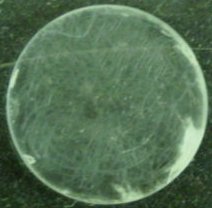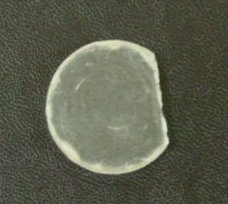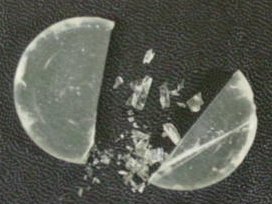| |
Back | Contents | Next
Troubleshooting
Problem: The salt plates look damaged. Can I still use them?

A salt plate that is in good condition
- IR plates are very expensive and easily damaged. They are made of water-soluble potassium chloride and will dissolve upon contact with moisture. IR plates are to be handled by the edges only; moisture from your hands will damage the polished surface.
- If the surface of the plate is badly scratched or is quite cloudy, it may affect the quality of recorded spectra.

A salt plate that is in poor condition
- Plates that are physically broken may still be used so long as less than ¼ of the plate's width has been cleaved (the IR beam passes through the center of the plate only, not the full plate). However, if more than ¼ of the plate is missing, or if the plate is broken in more than one location, it can no longer be used.

A salt plate that can still be used
|

A salt plate that is too badly damaged to use
|
|
Please report any damage to IR plates to your T.A. or the Laboratory Coordinator.
|
Top
Back | Contents | Next
|
|